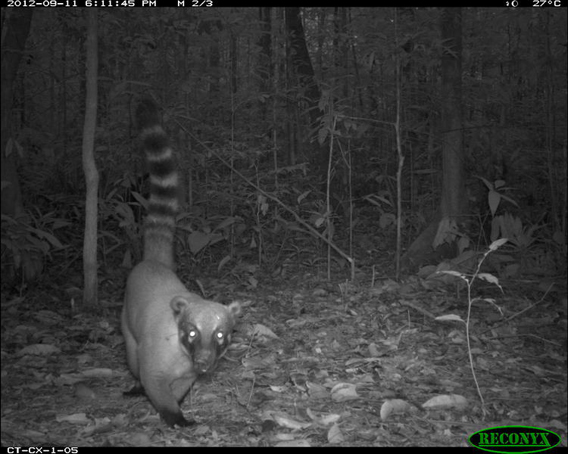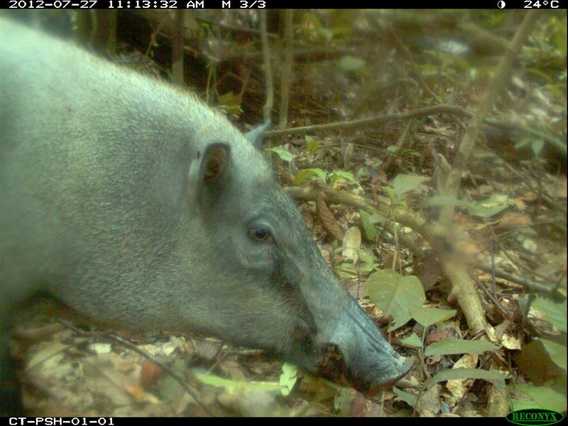
This jaguar (Panthera onca) from TEAM’s Cocha Cashu site in Manu National Park, Peru stayed in front of the camera for over 90 photographs, and became the 1,000,000 photograph taken by the TEAM Network.
Photo courtesy of the TEAM Network.
The world’s largest study of wildlife using remote camera traps has captured one million photographs. The project, known as the Tropical Ecology Assessment and Monitoring (TEAM) Network, takes photos of mammals and birds in 16 protected areas across 14 tropical countries in Asia, Africa, as well as Central and South America. Remote camera traps, which take stealth photos of wildlife when no humans are around, have become an increasingly important tool in the conservationists’ toolbox, allowing researchers to monitor otherwise hard-to-find animals in remote and often punishing locations.
“The one-millionth image is an amazing representation of our camera trap work, and it symbolizes the success we have had with this program in collecting new data,” said Dr. Jorge Ahumada, TEAM’s Technical Director. “We are also at a critical point in beginning to provide information to decision makers from the local to global level on how biodiversity is affected by climate change and habitat loss.”
Gathering thousands of photos from sites around the world has allowed scientists to take a global snapshot of how tropical mammals are faring. Important, the same methodology is employed at each site, allowing researchers to make comparisons within regions and between them. For example, in 2011, members of TEAM published a study that found mammal abundance and diversity fell in areas where forests were degraded or fragmented; large contiguous areas of forest, in contrast, still supported biodiverse and abundant mammal populations. The study looked at 52,000 photos, only 5 percent of the photos now available.
“One million pictures allow us to develop and test global indicators that are critical to measuring the success of global conservation and informing the global community on the increasingly perilous state of the world’s biodiversity,” explains Joshua Ginsberg, Senior Vice President, Wildlife Conservation Society, one of TEAM’s partner institutions.
The millionth photo was a snapshot of a jaguar in Manu National Park, Peru (more photos below).
TEAM is currently taking photos in sixteen parks:
- Barro Colorado Nature Monument – Soberania National Park (Panama)
- Bukit Barisan Selatan National Park (Indonesia)
- Bwindi Impenetrable Forest (Uganda)
- Caxiuanã National Forest (Brazil)
- Central Suriname Nature Reserve (Suriname)
- Manu National Park (Peru)
- Korup National Park (Cameroon)
- Manaus (Brazil)
- Nam Kading National Protected Area (Lao PDR)
- Nouabalé Ndoki (Republic of Congo)
- Pasoh Forest Reserve (Malaysia)
- Ranomafana National Park (Madagascar)
- Udzungwa Mountains National Park (Tanzania)
- Volcan Barva Transect (Costa Rica)
- Yanachaga-Chemillén National Park (Peru)
- Yasuni National Park and Biosphere Reserve (Ecuador)

Chimpanzee (Pan troglodytes) from TEAM’s site in Nouabale Ndoki National Park, Republic of Congo. Photo courtesy of the TEAM Network.

South American coati (Nasua nasua) from TEAM’s site in Caxiuana National Forest, Brazil. Photo courtesy of the TEAM Network.

Wild boar (Sus scrofa) from TEAM’s site in the Pasoh Forest Reserve, Malaysia. Photo courtesy of the TEAM Network.

Razor-billed Curassow (Mitu tuberosum) from TEAM’s Cocha Cashu site in Manu National Park, Peru. Photo courtesy of the TEAM Network.
Related articles